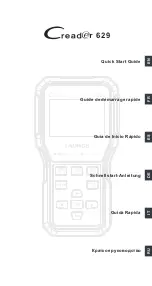
KTR-STOP
®
M-xxx B-xx-xx
Operating/Assembly instructions
KTR-N
Sheet:
Edition:
445102 EN
10 of 22
3
Please observe protection
note ISO 16016.
Drawn:
2020-03-25 Shg/Wie
Replacing:
KTR-N dated 2019-08-26
Verified:
2020-03-25 Shg
Replaced by:
•
Connect the pressure oil line to one of the pressure ports of the brake (see illustration 7 and 8). For that pur-
pose remove the screw plug beforehand.
!
The hydraulic lines have to be rinsed before connecting to the brake to prevent any partic-
les from getting into the brake. If the lines are not rinsed sufficiently, the gaskets may be
damaged and the operation of the brake is no longer ensured.
•
Mount a miniature measuring coupling with a miniature measuring hose to the venting hole (see illustration 7
and 8), for that purpose the screw plug needs to be removed beforehand. Discharge the end of the miniature
measuring hose in a suitable collection container.
The pressure ports on top serve for venting the brake. For a wash-up system please make
use of one of the pressure ports on top.
Always connect the brake consisting of two halves to a pressure line (see illustration 8),
since the brake disk is loaded with the full braking power on one side in case that one half
of the brake fails.
!
It is not recommended to use steel plugs for venting.
•
Connect the drain line to the brake (see illustration 7 and 8). For that purpose remove the sealing plugs befo-
rehand.
If no drain line is connected, a vacuum may be generated inside the brake which will dama-
ge the gaskets.
!
Never give any pressure on the drain line. Gaskets and scrapers are destroyed in this way.
In order to locate a leakage immediately, it is recommended to use a transparent hose and
collection container. Since higher pressures (5 bar at the maximum) are not generated, a
pneumatic hose may be used, too. Please regularly inspect the brake for leakages.
!
Severe leakages have to be removed immediately. Oil which has escaped has to be comple-
tely removed, since oil remains may vaporize on hot components and ignite.
Illustration 7: Connections of the drain lines/pressure lines
Illustration 8: Pressure port of a brake
Please make sure that the connections and hoses are adapted to the brakes with regard to
pressure, flow rate, temperature and liquid.
Moreover, you have to use flexible hydraulic hoses in order to not limit the motions of the
brake. Any hoses which are located close to mobile components should be secured or
coated accordingly.
4
Assembly
4.5 Pressure port of a brake








































